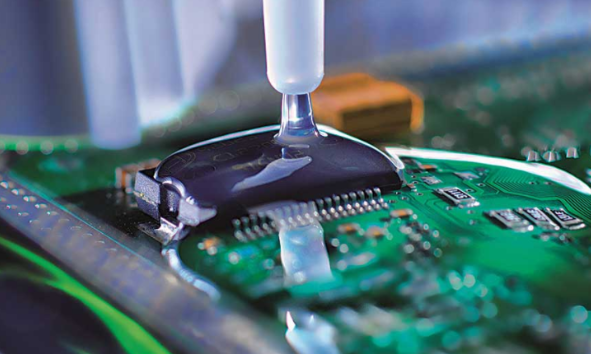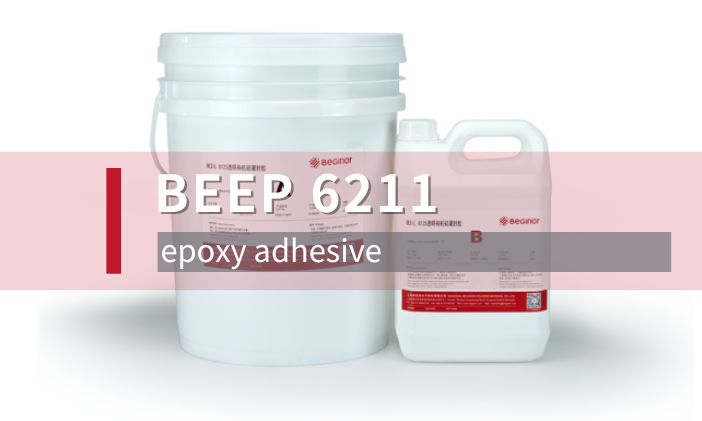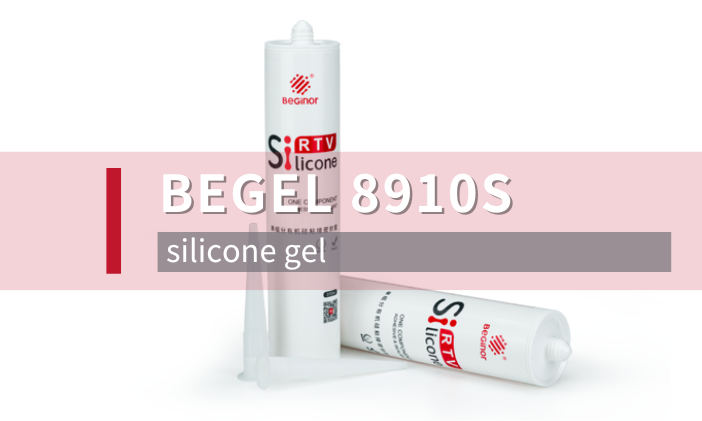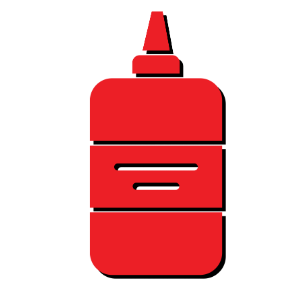Thermal conductive gel is a kind of thermally conductive material, which is mainly used for thermal protection of electronic products. It is mainly made of silica gel material. The thermal conductive gel inherits the advantages of good affinity, weather resistance, high and low temperature resistance and good insulation of silica gel material, and has strong plasticity, which can meet the filling of uneven interfaces and meet the heat transfer needs of various applications. It has high thermal conductivity, low compression force application, low pressure, high compression ratio, high electrical insulation, good temperature resistance and new energy, and can realize automatic use. This material has some advantages of thermal pads and thermal grease, and makes up for the weaknesses of both

The thermal conductive gel inherits the advantages of good affinity, weather resistance, high and low temperature resistance and good insulation of silica gel material, and has strong plasticity, which can meet the filling of uneven interfaces and meet the heat transfer needs of various applications. It has high thermal conductivity, low compression force application, low pressure, high compression ratio, high electrical insulation, good temperature resistance and new energy, and can realize automatic use
Features of thermally conductive gels
1. Performance characteristics
Compared with thermal pads, thermal gel is softer and has better surface affinity, which can be compressed to a very low thickness, so that the heat transfer efficiency can be significantly improved, the lowest can be compressed to 0.1mm, and the thermal resistance at this time can be 0.08 °C·in2/W - 0.3 °C·in2/W, which can reach the performance of part of the silicone grease. In addition, the thermally conductive gel has almost no hardness and does not cause internal stress on the device after use.
Thermally conductive gels are easier to handle than thermal greases. The general use of silicone grease is screen or steel plate printing, or direct brushing, which is very unfriendly to users and the environment, and because of its certain fluidity, it generally cannot be used in occasions with a thickness of more than 0.2mm.
The thermal mud can be molded into the desired shape arbitrarily, and can ensure good contact with uneven PCB boards and irregular devices (such as batteries, component corners, etc.).
The thermally conductive gel has a certain adhesion, and there will be no problems of oiliness and drying, which has certain advantages in reliability.
2. Advantages of continuous operation
The thermal conductive gel can be directly weighed and used, and the commonly used continuous use method is the dispensing machine, which can realize fixed-point quantitative control, save labor and improve production efficiency
3. How to use thermally conductive gel
When using the manual type of thermal conductive adhesive, you need to unscrew the mouth cover, connect the threaded mixing head, and then clamp the hose to the bayonet of the AB glue gun, and apply the glue hard, the AB glue is extruded to the mixing head by the glue gun, and the uniform mixing is completed under the guidance of the thread (A/B two colors are mixed into a uniform one color), and finally the evenly mixed thermal conductive glue is dotted to the heating position according to the heat dissipation structure design. The dispensing type should be operated according to the instructions of the dispenser
4. Curing time
From the beginning of contact between the A and B glue mixing heads, the viscosity will increase in 5 minutes, dry in 10 minutes, and 30 to 3 hours, the product will gradually harden and become elastic, which is manifested as a continuous increase in hardness to no longer change
5. Reliability
The cured thermal adhesive is equivalent to the thermal conductive silica gel sheet, with high temperature resistance, good aging resistance, and can work at -40~150 °C for a long time
6. Pay special attention
Thermally conductive gels differ from adhesives in that they have a weak bond and cannot be used to fix heat sinks
Applications of thermally conductive gels
Thermally conductive gels are widely used in LED chips, communication equipment, mobile phone CPUs, memory modules, IGBTs and other power modules, and power semiconductors

Typical application cases of thermally conductive gels
The application is the application in the driving power supply in the LED bulb. In the export of LED lamps, in order to pass UL certification, manufacturers mostly use two-component potting compound for potting. Lamps exported to the United States require 50,000 hours of warranty, with the current quality of LED lamp beads is no problem, the main fault is the power supply, the power supply after potting glue is not disassembled, only the whole lamp can be scrapped and replaced. If the heat conduction mud is used to fill the power supply locally, the heat can be effectively exported, and if the power supply is problematic, the power supply can also be easily replaced, which saves the cost for the enterprise. Of course, for lamps that require waterproofing. Because the thermal conductive mud cannot fill all the gaps like a potting compound, and cannot be waterproof and moisture-proof, it is still necessary to use a potting compound.
Another typical application is in LED fluorescent lamps, for the design of the power supply at both ends, in order not to occupy too much of the size of the lamp, the space of the two ends of the power supply is relatively small, and the power of the 1.2m LED fluorescent lamp is usually designed to 18w to 20w, so that the heat generated by the power supply becomes relatively large. Thermal mud can be used to fill the gaps in the power supply, especially attached to the power device, to help dissipate heat and extend the life of the lamp. For some sealed module power supplies, thermal mud can be used for local filling to achieve the effect of thermal conductivity.
Then there is the heat dissipation of the chip, about this way, you should also be familiar with it, similar to the silicone grease layer between the processor and the heat sink is a principle, its function is to let the heat emitted by the processor can be transferred to the heat sink faster and then dissipated.
Similarly, thermal gel can also be used in mobile phone processors, and a thermal gel heat sink similar to silicone grease is used on the processor of Huawei mobile phones, which has a better contact effect than only a graphite heat dissipation film, and the heat conduction will be more rapid
Which TIMs is the best choice?
Basically, each application and production will be suitable with a different type of thermally conductive materials. To receive further consultant, please contact our Glue Expert at:
Hotline: (+86) 18121160382
Email: marketing@shbeginor.com
















